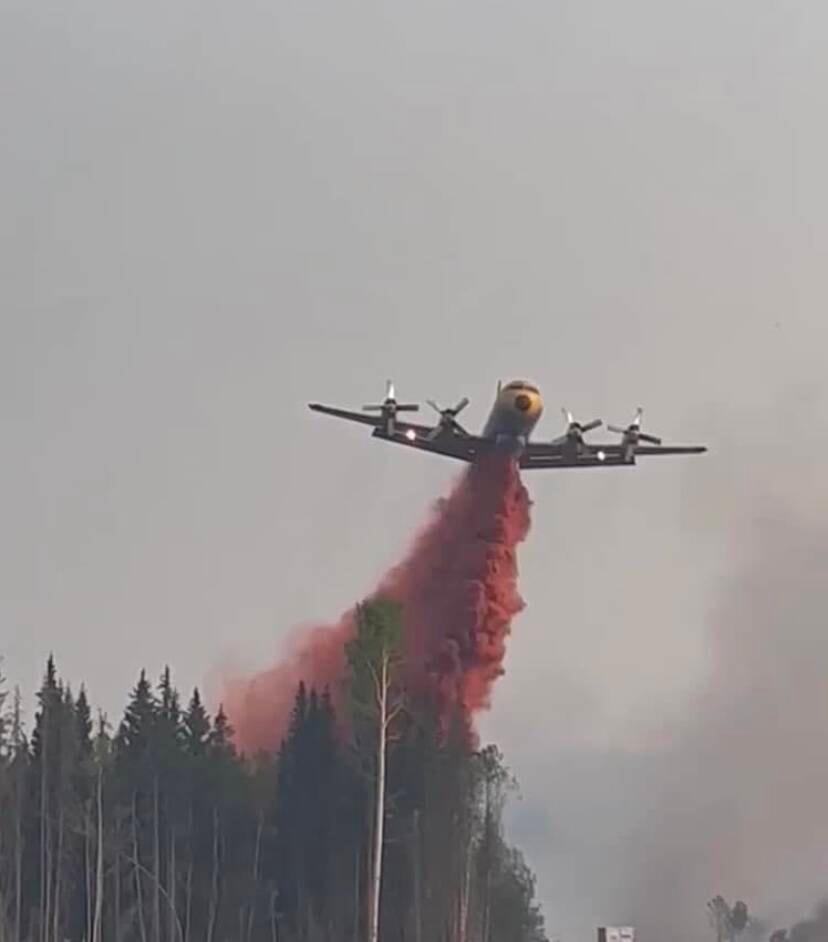The Southside community has been facing the dual challenges of battling wildfires and overcoming the obstacles posed by its remote location. As the scorching summer begins, the community has already witnessed eight fires, prompting residents to take proactive action in collaboration with the Chinook Emergency Response Society (CERS) and the Southside Volunteer Fire Department (SSVFD).
Scott Zayac, spokesperson for the Chinook Emergency Response Society (SERS) remarked, comparing the situation to previous years, “This year seems to be particularly bad with the hot weather, and it seems like there is less water in the streams and low-lying areas.” The implications of such circumstances are evident, as even small grass fires have the potential to quickly spiral out of control.
“Today, CERS works in conjunction with the Southside Volunteer Fire Department (SSVFD) and BC Wildfire Service (BCWS),” Zayac added. “We have had one large fire that we have been grateful to have the very quick response from BCWS and their aircraft to help slow down and bring that fire to a status of under control. In all of the fires, the community played a significant role in the outcome with minimal damage and no loss of infrastructure.”
Casda Thomas, the Fire Information Officer with the BC Wildfire Service (BCWS), emphasized the importance of local fire departments in addressing wildfires within their jurisdiction.
“When fires occur within their boundaries, the respective fire departments take the lead in response efforts, with BCWS offering assistance upon request,” said Thomas.
This coordinated approach ensures prompt action, as landowners and neighbours are often the first to respond, enabling a swift and effective firefighting response until the fire is reported to BCWS at which point they might request members of the public cease their activities to allow for fire response, which may include helicopters and/or airtankers.
However, the challenges presented by the remoteness of the Southside region have meant increased local participation. Many wildfires in recent weeks, including several person-caused incidents on private property, have required immediate local response before BCWS intervention.
On May 10, there was a fire reported in the Tatalrose area that was caused by a lightning strike. The community responded quickly with dozens of neighbours and several Community Wildfire Response Units being mobilized. According to Zayac, while the fire was reported to BCWS, because of the remote location and the fact that the BCWS crews were also responding to three other calls that night, crews were stretched thin. It took a few hours for BCWS to get out to this fire. Because of rapid community response, the fire was contained before it got out of control.
Zayac further highlighted the limitations imposed by the area’s communication infrastructure.
“There are large regions that have no cellular service and this is a huge problem for reporting and coordinating emergencies. The area needs more cell towers so that information can be relayed in a timely manner,” he said.
To address these issues, CERS aims to enhance resources, including trailers and “Neighbourhood Pod Leaders,” while exploring the possibility of a commercial water-filling station on the Southside.
The collaboration between CERS, SSVFD, and BCWS remains a crucial aspect of the Southside’s wildfire preparedness and response strategy. CERS, formed in the aftermath of the devastating 2018 wildfires, aims to educate, coordinate, and communicate with citizens and relevant organizations to enhance emergency preparedness. Their swift response to recent fires, demonstrates the community’s willingness to mobilize resources and work alongside BCWS in a coordinated manner, added Zayac.
Zayac acknowledged that the BCWS’ Forward Attack Base at Takysie Lake has improved response times whenever there are crews stationed at the base.
Thomas confirmed that the Takysie forward attack base is currently active and BCWS has had crews stationed there this year when required.
“That does not mean that there will always be crews stationed at the base. The placement of BCWS crews and other resources is dependent on several factors, including conditions across the fire centre. We are constantly monitoring expected weather and conditions as well as fuels and areas of concern. We consistently assess and reassess the need for resources in all areas of the fire centre,” said Thomas.
Zayac noted that since there would continue to be large fire events in B.C. in the future, when resources get stretched, relying only on the Province to save you or your property could get limiting.
“Preparation and coordination are paramount in safeguarding our communities and properties. We urge all residents to engage in emergency preparedness, utilizing the abundant resources available. The Regional District Bulkley Nechako (RDBN) provides checklists and handouts to assist in this endeavour. In the Southside, as well as the Collymount/Trout Creek area, neighbours are actively joining forces, sharing resources, and planning together. We encourage other neighbourhoods to adopt similar proactive measures. FireSmarting your homes and properties is vital for all property owners, regardless of whether you live on a farm, an acreage, or in town,” said Zayac.
For more information on the efforts of the Chinook Emergency Response Society, visit their website at Chinook-ERS.ca or join their Facebook group at facebook.com/groups/chinookinfo.
